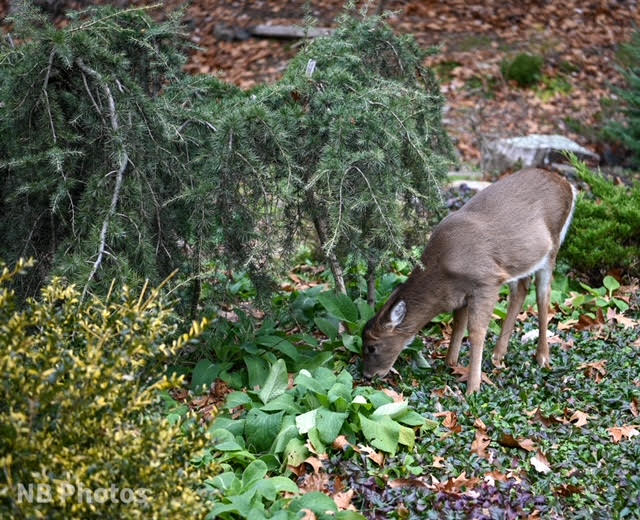
DEER DAMAGE
During the winter months, deer can do a great deal of damage to shrubs and trees. They browse on exposed foliage, eat the bark of young trees, and rub with their antlers. Shrubs and trees are particularly vulnerable during winter when other sources of food are scarce. Hungry deer will eat almost anything. They dine on the winter foliage of many evergreen trees and shrubs, like arborvitae and yews. They also eat the bark of young trees, as well as any twigs, buds, acorns and berries they can reach. One adult deer can consume up to four pounds of woody twigs a day.
MANAGING DEER DAMAGE
Individual shrubs and trees can be protected with metal cages, providing the cages are tall enough to prevent deer from reaching over the top. This approach is costly and impractical for protecting large areas.
Repellants are also effective when applied frequently. They contain natural ingredients that are offensive to deer’s sense of smell or taste. However, deer often become used to a particular repellant, so different types are required. They also must be reapplied after rain. Repellents do not eliminate all feeding, need to be applied often, and are expensive to purchase and apply on the large expanses of an arboretum.
The most reliable way to prevent deer damage is perimeter fencing. An 8-foot fence is recommended because deer are good jumpers and can vault over a 6-foot fence. Standing on their hind legs, they can reach 7 feet high to browse in trees.
Click here to see Deer in the Arboretum video by Lourdes Osorio
